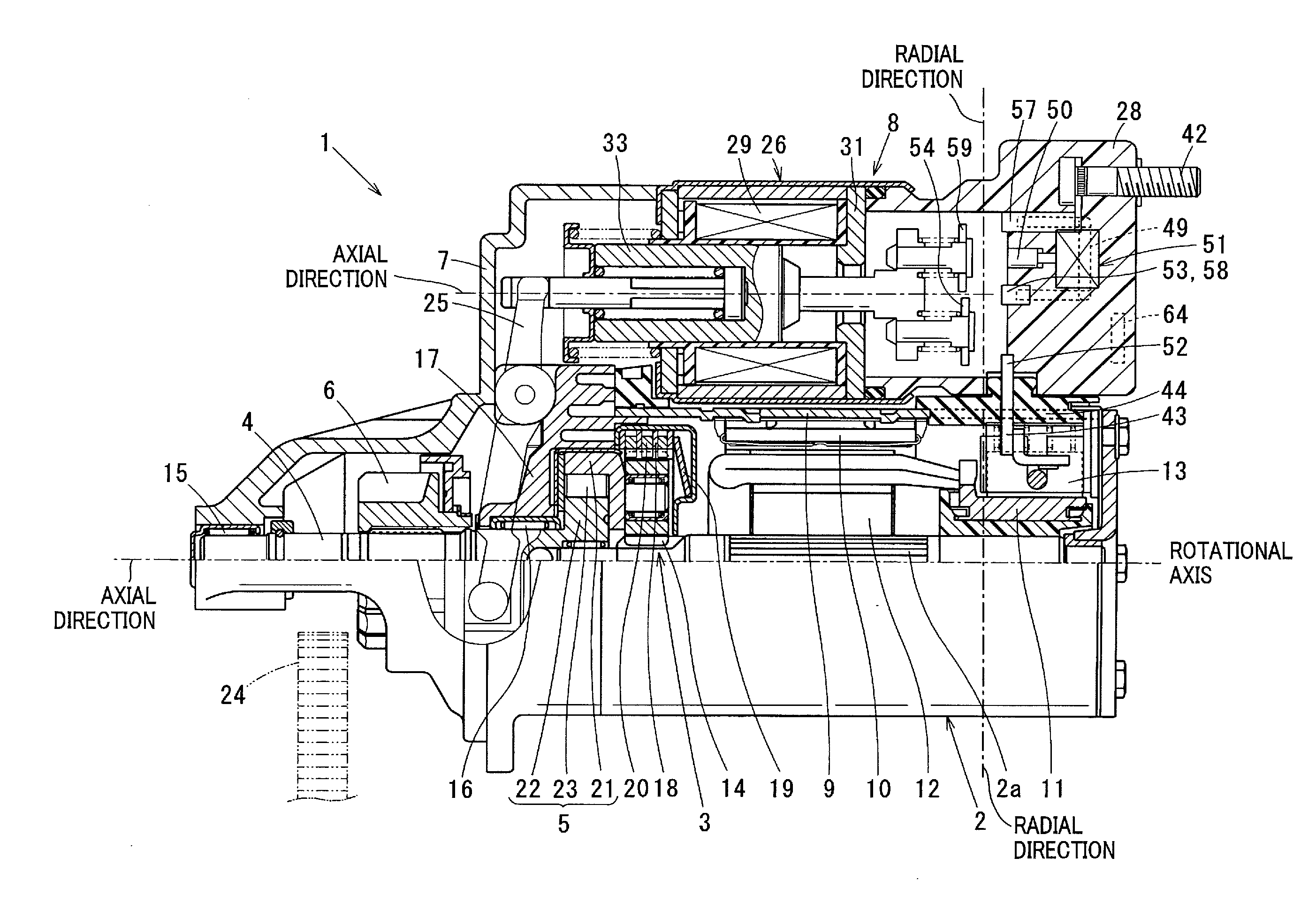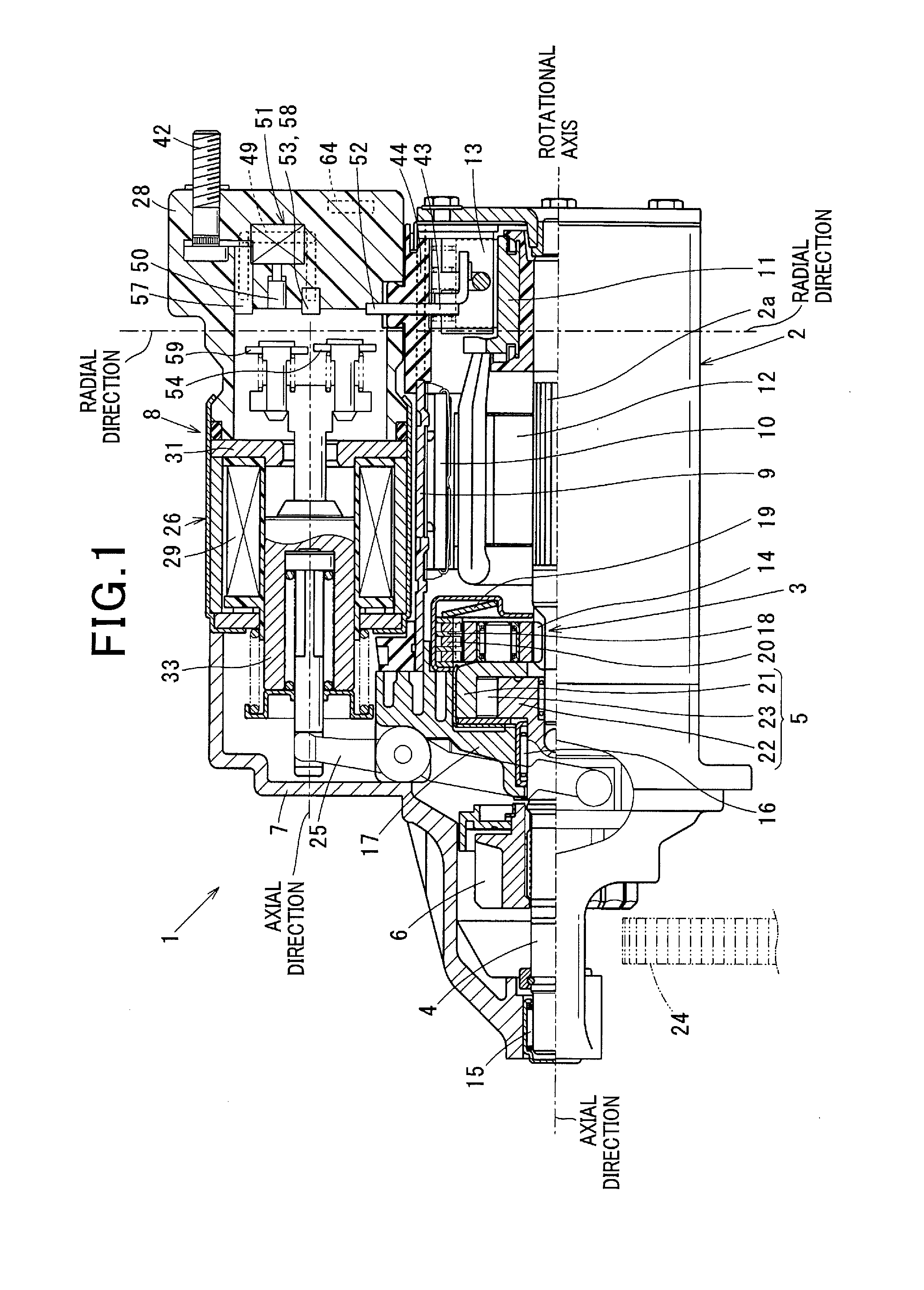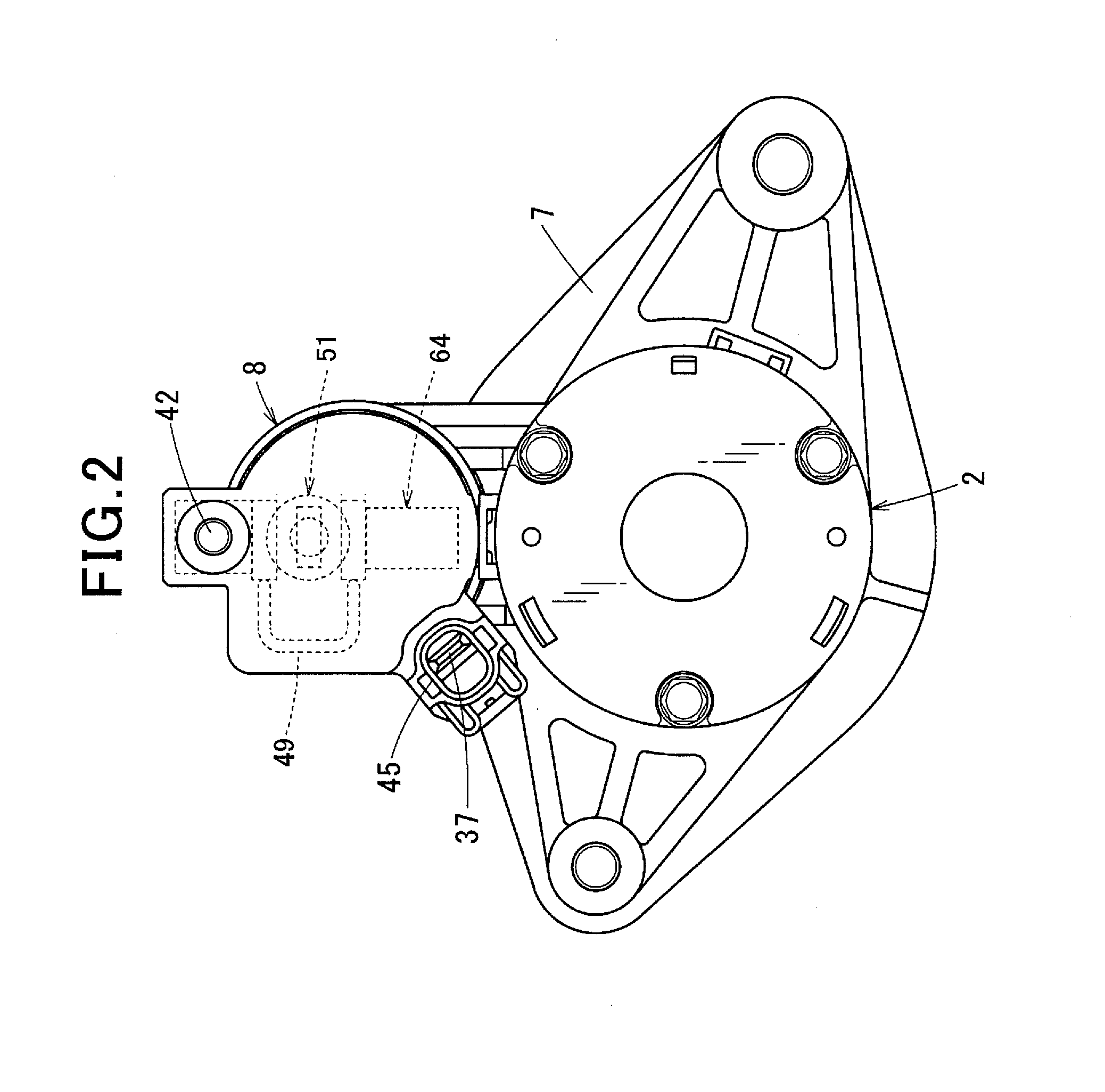Starter provided with electromagnetic solenoid integrating rush current suppression function
a technology of electromagnetic solenoid and function, which is applied in the direction of engine starters, machines/engines, relays, etc., can solve the problems of large current flow (referred to as starting current or rush current), significant stress on the driver, and momentary stop of electric equipment such as meters, audio equipment or navigation systems, so as to reduce the heat generated by the sub solenoid being energized and avoid significant voltage drop of battery voltage , the effect of enhancing the robustness of the electromagnetic sol
- Summary
- Abstract
- Description
- Claims
- Application Information
AI Technical Summary
Benefits of technology
Problems solved by technology
Method used
Image
Examples
first embodiment
[0045]With reference to FIGS. 1 to 13, hereinafter is described the first embodiment.
[0046]As shown in FIG. 1, the starter 1 according to the first embodiment includes a commutator motor 2 that generates rotational force by being energized, a reduction unit 3 that reduces the rotational speed of the motor 2, an output shaft 4 coupled to an armature shaft 2a of the motor 2, an impact absorber (described later) that absorbs excessive impact propagated from the engine side, a clutch 5 that transmits torque generated by the motor 2 and amplified by the reduction unit 3 to the output shaft 4, a pinion 6 disposed on the output shaft 4 and an electromagnetic solenoid unit 8 fixed to a starter housing 7 together with the motor 2. The motor 2 and the electromagnetic solenoid unit 8 are fixed to the starter housing 7 to be in parallel to each other such that the rotational axis of (armature shaft 2a) the motor 2 and the longitudinal direction (axial direction) of the electromagnetic solenoid ...
second embodiment
[0083]According to the second embodiment, as shown in FIG. 11, the M terminal 43 has a bolt-shape similar to that of the B terminal 42 described in the first embodiment. In this case, regarding the small solenoid 51, the negative terminal side of the coil 62 can readily be connected to the M terminal 43 inside the switch cover 28 and can be connected to the ground (earth) from the M terminal 43 via the motor 2.
[0084]The IC 64 that controls the operating time of the small solenoid 51 is connected in series to the operation circuit of the small solenoid 51. In other words, the IC 64 is connected between the small solenoid 51 and the ground, or connected between the terminal-5037 and the small solenoid 51.
[0085]Regarding the M terminal 43 having bolt-shape according to the second embodiment, as similar to that of the conventional ISS switch or the non-ISS switch, a terminal of the motor lead (not shown) is connected to the male screw portion protruded from the backend of the switch cov...
third embodiment
[0086]According to the third embodiment, a structure is exemplified of the starter 1 in which the small solenoid 51 is connected to the M terminal 43 as similar to that of the second embodiment, and having longer operating life as similar to that of the brush 13. The starter 1 that uses the commutator motor 2 cannot accurately detect the operating life of the brush 13. Hence, the number of operating times is counted in the vehicle side and the ECU 48 prompts the user to exchange the starter 1 when the number of operating times reaches a predetermined value (life time operating count). In this case, since the brush 13 is designed to have enough margin in its operating life to meet the estimated operating life (i.e., not less than estimated operating times) of the starter 1, the brush 13 cannot be used effectively until around the operating life thereof.
[0087]Meanwhile, when the brush 13 wears to reach around the operating life, a contact pressure between the commutator 11 and the bru...
PUM
 Login to View More
Login to View More Abstract
Description
Claims
Application Information
 Login to View More
Login to View More - R&D
- Intellectual Property
- Life Sciences
- Materials
- Tech Scout
- Unparalleled Data Quality
- Higher Quality Content
- 60% Fewer Hallucinations
Browse by: Latest US Patents, China's latest patents, Technical Efficacy Thesaurus, Application Domain, Technology Topic, Popular Technical Reports.
© 2025 PatSnap. All rights reserved.Legal|Privacy policy|Modern Slavery Act Transparency Statement|Sitemap|About US| Contact US: help@patsnap.com



